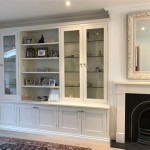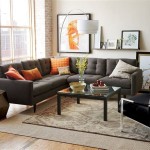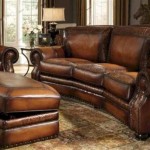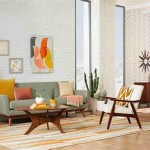Instead, introduce the key points.
Dining and Living Room Decorating Ideas
The dining room and living room often serve as the central gathering spaces within a home. Consequently, their design and décor significantly impact the overall atmosphere and functionality of the living environment. Decorating these areas effectively requires careful consideration of factors like spatial dimensions, lighting, color palettes, furniture selection, and personal style. A well-designed dining and living room should be aesthetically pleasing, comfortable, and conducive to both relaxation and social interaction.
Achieving a harmonious and functional design in these spaces necessitates a holistic approach, blending practical considerations with artistic expression. It requires understanding the principles of interior design, such as balance, proportion, rhythm, and emphasis, to create a cohesive and visually appealing environment. Thoughtful planning and execution are paramount to avoid common pitfalls like overcrowding, poor lighting, or clashing styles. This article will explore various decorating ideas and strategies for transforming your dining and living room into spaces that reflect your personality and cater to your lifestyle.
Optimizing Space and Layout
The initial step in decorating a dining and living room involves carefully assessing the available space and determining the most efficient layout. This is particularly crucial in smaller homes or apartments where these spaces may be combined or have limited dimensions. Consider the flow of traffic within the room and arrange furniture to facilitate easy movement and avoid obstructions. Using architectural drawings, real estate measurements, or digitally sketching the room can help avoid furniture and decorations from making the space feel smaller than it is. Functionality should be the primary consideration during the layout phase, ensuring that the room meets your specific needs and accommodates your daily activities.
In open-concept designs, clearly defining the dining and living areas is essential. This can be achieved through the strategic placement of furniture, the use of area rugs, or the incorporation of architectural elements like partial walls or dividers. These visual cues help create distinct zones within the larger space, enhancing both functionality and aesthetic appeal. The careful selection and arrangement of furniture are paramount to maximizing space and optimizing the overall layout. Opt for pieces that are appropriately scaled to the room's dimensions and consider multifunctional furniture options to save space and enhance versatility.
For instance, a sectional sofa with built-in storage can provide ample seating while also offering a discreet storage solution for blankets, pillows, or other items. Similarly, a dining table with extendable leaves can be adjusted to accommodate varying numbers of guests. Space-saving furniture options like nesting tables, folding chairs, and wall-mounted shelves can be particularly useful in smaller spaces. Mirror placement is another technique that can visually expand the size of a room. Positioning a large mirror strategically can reflect light and create the illusion of more depth.
When thinking about layout, consider the focal points of the room. In the living room, this might be a fireplace, a large window with a view, or a statement art piece. Arrange the furniture to direct attention towards this focal point and create a sense of balance and harmony. In the dining room, the dining table itself is typically the focal point. Ensure that it is appropriately sized for the room and that there is sufficient space around it for comfortable seating and movement. Thinking about the room in its entirety can help create an overall flow that optimizes the space and brings a sense of comfort to all who enter the room.
Selecting Color Palettes and Lighting Schemes
Color profoundly influences the mood and ambiance of a room. The choice of a color palette is a fundamental aspect of interior design, and it should be carefully considered to create the desired atmosphere in your dining and living room. Lighter, neutral colors like white, beige, and gray can make a room feel more spacious and airy, while bolder, darker colors can add warmth and drama. Consider the amount of natural light that the room receives when selecting a color palette. Rooms with limited natural light may benefit from lighter colors that reflect light and brighten the space.
Understanding color psychology is crucial for creating the desired mood. For instance, blue is often associated with calmness and serenity, making it a popular choice for living rooms. Green is associated with nature and can create a sense of freshness and vitality. Yellow is a cheerful and uplifting color that can add warmth to a space. Red is a bold and energetic color that can be used to create a sense of excitement and passion. However, it is important to use red sparingly, as it can be overwhelming in large quantities.
Lighting is another critical element in interior design. A well-lit room is not only functional but also aesthetically pleasing. A layered lighting approach, incorporating ambient, task, and accent lighting, is ideal for creating a versatile and inviting space. Ambient lighting provides overall illumination and sets the general mood of the room. Task lighting provides focused illumination for specific activities like reading or working. Accent lighting highlights specific features or artwork and adds visual interest.
Consider the type of light fixtures that you use. Chandeliers, pendant lights, and recessed lighting are popular choices for ambient lighting. Table lamps, floor lamps, and desk lamps are ideal for task lighting. Spotlights, track lighting, and picture lights can be used for accent lighting. Dimmers are a valuable addition to any lighting scheme, as they allow you to adjust the brightness of the lights to create different moods and atmospheres. Natural light is a precious commodity, so make sure to maximize its presence in the room. Use sheer curtains or blinds to allow natural light to filter in while still providing privacy. Avoid blocking windows with furniture or other obstructions.
Integrating Personal Style and Decorative Accents
Beyond functionality and aesthetics, the dining and living room should be a reflection of your personal style and preferences. Incorporating decorative accents that align with your taste is essential for creating a space that feels truly unique and inviting. This can involve showcasing your favorite artwork, displaying cherished collections, or incorporating personal touches that reflect your interests and hobbies. By putting character into a space, you will make it inherently more welcoming.
Start by identifying your preferred interior design style. Are you drawn to the clean lines and minimalist aesthetic of modern design? Do you prefer the warmth and comfort of traditional design? Or perhaps you are more inclined towards the eclectic and bohemian style? Once you have a clear understanding of your preferred style, you can begin to select decorative accents that complement it. For a more modern aesthetic, choose minimalist and geometric art pieces. For a traditional design, antiques may be more in line with taste. For an eclectic design, various styles can be blended to create a unique ambiance. The possibilities are endless when thinking about how to bring personality into a room.
Textiles play a significant role in adding texture and visual interest to a room. Consider incorporating a variety of fabrics and textures in your furniture upholstery, curtains, rugs, and throw pillows. Mixing different textures, such as linen, velvet, silk, and wool, can create a more layered and sophisticated look. Plants and flowers are another excellent way to add life and vibrancy to a room. Indoor plants not only enhance the aesthetic appeal of the space but also improve air quality and create a sense of well-being. Arrange plants strategically throughout the room to create a natural and inviting atmosphere.
Art and accessories can transform a space from functional to fantastic. Whether it's framed prints, hand-painted artworks, or sculpture work, art is a great way to fill blank wall space. Similarly, accessories such as vases or trinkets can bring life and personality to table top spaces. When selecting decorative accents, it is important to consider the overall balance and harmony of the room. Avoid overcrowding the space with too many items, as this can create a cluttered and overwhelming feel. Instead, focus on selecting a few key pieces that make a statement and complement the overall design. Remember to choose items that have personal meaning to you, as these will add character and warmth to your dining and living room.
Ultimately, decorating a dining and living room is a personal journey. There is no one-size-fits-all approach, and the best design is the one that reflects your unique style and caters to your specific needs. By carefully considering the factors outlined above and incorporating your personal touch, you can transform your dining and living room into spaces that are both beautiful and functional, creating a welcoming and comfortable environment for yourself and your guests. With the above steps, your dining and living room areas can become spaces that everyone adores.

Living Room And Dining Design Ideas Designcafe

Living Room Dining Combo Ideas With Tricks Doğtaş

Living Room And Dining Design Ideas Designcafe

Living Room And Dining Decorating Ideas Design Hgtv

Online Living Room Dining Combo Ideas Decorilla Portfolio

Perfect Ways To Decorate A Living Room With Dining Area Attached Unique And Design

5 Tips For Decorating A Combined Living Dining Room Happily Ever After Etc

30 Living Room Dining Combo Ideas 2024 One For All Rectangle Rectangular Rooms

Remarkable Pairings 40 Gorgeous Living Dining Combos

Living Room Dining Combo Ideas With Tricks Doğtaş
See Also








